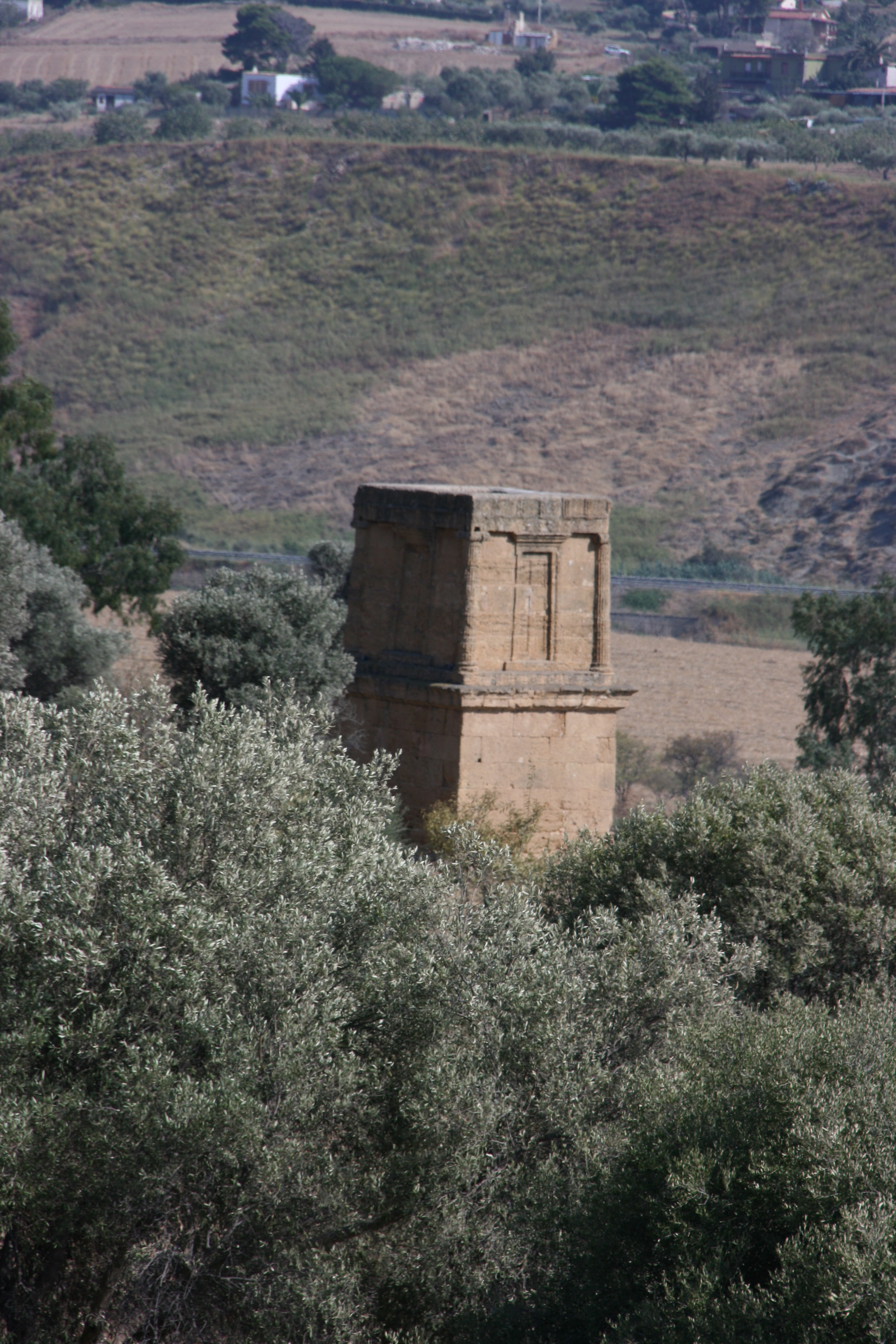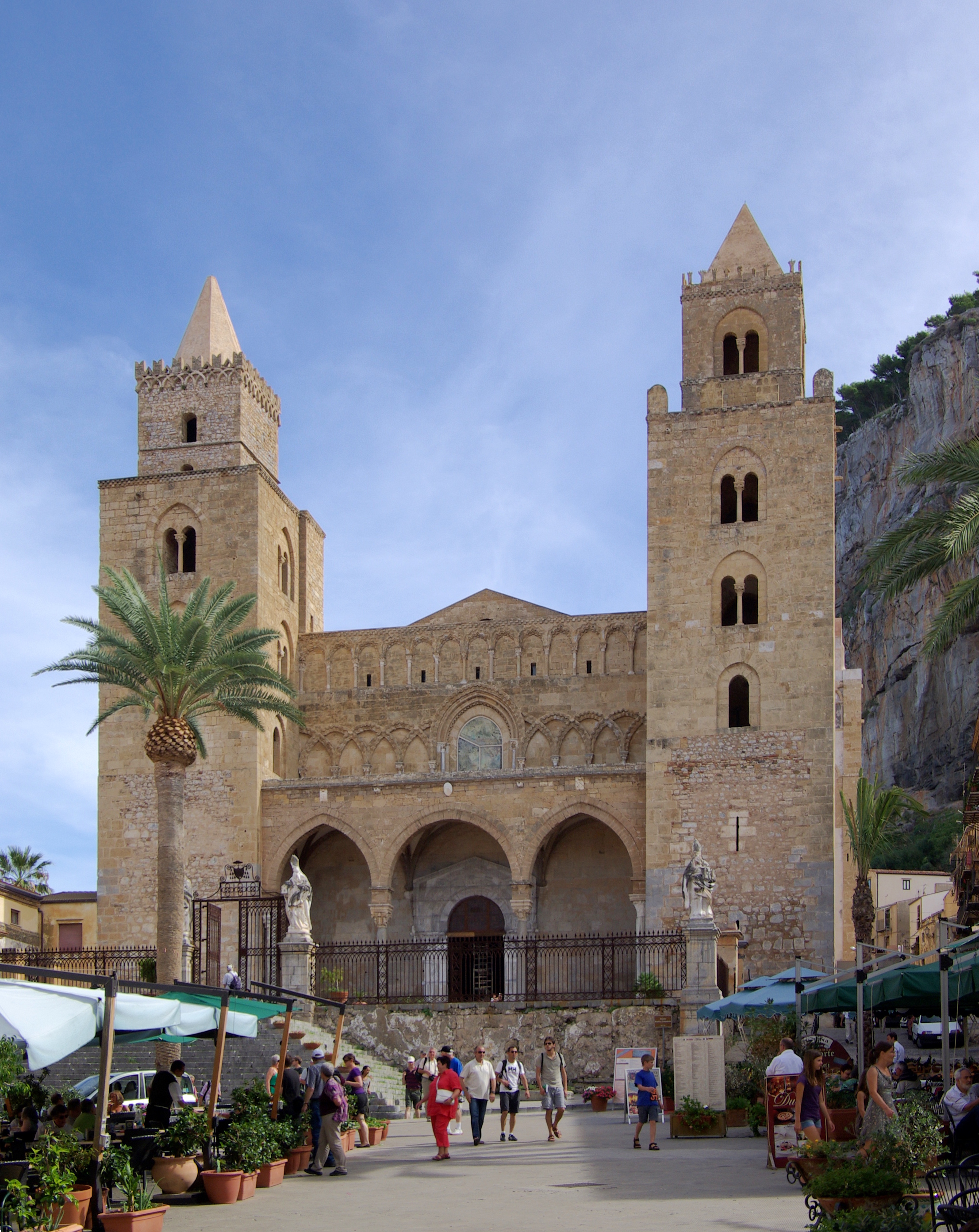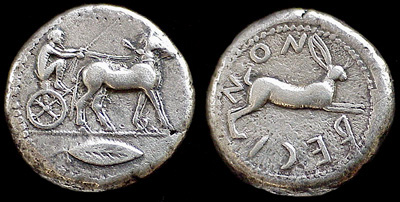|
Himera
Himera (Greek language, Greek: ), was a large and important ancient Greece, ancient Greek city, situated on the north coast of Sicily at the mouth of the river of the same name (the modern Imera Settentrionale), between Panormus (modern Palermo) and Cephaloedium (modern Cefalù) in the ''comune'' of Termini Imerese. Many of its remains can be visited and there are two museums on the site. History Foundation and earliest history image:Imera tempio della vittoria mod.jpg, 250px, Ideal reconstruction of the Temple of Victory. Himera was the first Greek settlement on this part of the island and was a strategic outpost just outside the eastern boundary of the Ancient Carthage, Carthaginian-controlled west. Thucydides says it was the only Greek city on this coast of Sicily, which must however be understood with reference only to independent cities. Mylae, which was also on the north coast and certainly of Greek origin, was a dependency of Zancle (modern Messina). All authorities agre ... [...More Info...] [...Related Items...] OR: [Wikipedia] [Google] [Baidu] |
Battle Of Himera (480 BC)
The Battle of Himera (480 BC), supposedly fought on the same day as the Battle of Salamis, or at the same time as the Battle of Thermopylae, saw the Greek forces of Gelon, King of Syracuse, and Theron, tyrant of Agrigentum, defeat the Carthaginian force of Hamilcar the Magonid, ending a Carthaginian bid to restore the deposed tyrant of Himera. The alleged coincidence of this battle with the naval battle of Salamis and the resultant derailing of a Punic-Persian conspiracy aimed at destroying the Greek civilization is rejected by modern scholars. Scholars also agree that the battle led to the crippling of Carthage's power in Sicily for many decades. It was one of the most important battles of the Sicilian Wars. The discovery in 2007 and 2008 of mass graves from the battle has confirmed the location and nature of the battle. Background The Phoenicians had planted trading posts all over the coast of Sicily after 900 BC, but had never penetrated far inland. They had traded with the ... [...More Info...] [...Related Items...] OR: [Wikipedia] [Google] [Baidu] |
Battle Of Himera (409 BC)
Near the site of the Battle of Himera (480 BC), first battle and great Ancient Carthage, Carthaginian defeat of 480 BC, the Second Battle of Himera was fought near the city of Himera in Sicily in 409 between the Carthaginian forces under Hannibal Mago (a king of Carthage of the Magonid family, not the famous Hannibal of the Barcid family) and the Ionian Greeks of Himera aided by an army and a fleet from Syracuse, Sicily, Syracuse. Hannibal, acting under the instructions of the Carthaginian senate, had previously sacked and destroyed the city of Selinus after the Battle of Selinus in 409. Hannibal then destroyed Himera which was never rebuilt. Background Phoenicians of Western Sicily had aided the Elymians against the Dorian Greeks of Selinus in 580 when a Greek colonization attempt of Lilybaeum was defeated. The invasion of Spartan Dorieus was again defeated by Carthage near Eryx (Sicily), Eryx in 510, and a war followed where Carthage destroyed the city of Hereclea Minoa. Carth ... [...More Info...] [...Related Items...] OR: [Wikipedia] [Google] [Baidu] |
Imera Settentrionale
The Imera Settentrionale (Greek: , Latin: ''Himera''; it, Imera Settentrionale or also ) is a river of Sicily, rising in the Western Madonie mountains near Cozzo Levanche, and flowing approximately through the ''comuni'' of Caltavuturo, Campofelice di Roccella, Cerda, Collesano, Scillato, Sclafani Bagni, Termini Imerese and Valledolmo (all in the Province of Palermo) to the Tyrrhenian Sea at the site of the ancient city of Himera. The drainage area is , making it one of the principal rivers of Sicily to flow into the Tyrrhenian.Bacino Idrografico del fiume Imera Settentrionale, Relazione bacino Regione Siciliana, p. 1-2 Historical significance Himera was the ancient name of two rivers in Sicily, the Imera Settentrionale flowing to the north into ...[...More Info...] [...Related Items...] OR: [Wikipedia] [Google] [Baidu] |
Termini Imerese
Termini Imerese (; scn, Tèrmini ) , grc, Θερμαὶ αἱ Ἱμερᾶαι , grc, Θερμαὶ Ἱμέραι , or grc, Θερμὰ (Ἱμεραῖα) ; la, Thermae Himerenses; literally "Himera's hot springs". is a town of the Metropolitan City of Palermo on the northern coast of Sicily, in Italy. It is one of the most important towns of the Metropolitan City of Palermo, from which it is 33 km far. The town is easily reachable through its well developed infrastructures: there are three highway exits along the A19, its station is the meeting point between all of the Sicilian railway lines and its seaport links the town with other important maritime Italian cities. It has a judicial district. It's culturally interesting for the close Greek ruins of Himera, its numerous churches, Roman ruins, prehistorical finds and the annual celebration of the Carnival, one of the oldest of Italy. In the heart of the old town, at its lower level, there are the thermal baths of the ... [...More Info...] [...Related Items...] OR: [Wikipedia] [Google] [Baidu] |
Terillus
Terillus ( el, Τήριλλος; fl. early 5th century BC) was a son of Crinippus, tyrant of Himera, in Sicily. Nothing is known about how Terillus rose to power. Nor is there any information available to historians about the duration or events of his reign. Rather, knowledge about Terillus relies on his interactions with other historical figures. Terillus sought to consolidate his power as tyrant of Himera by giving his daughter Cydippe in marriage to Anaxilas, the ruler of Rhegium. Terillus also maintained good relations with the Carthaginian general Hamilcar. Hence, when Terillus was expelled in 483 BC from Himera by Theron, tyrant of Agrigentum Agrigento (; scn, Girgenti or ; grc, Ἀκράγας, translit=Akrágas; la, Agrigentum or ; ar, كركنت, Kirkant, or ''Jirjant'') is a city on the southern coast of Sicily, Italy and capital of the province of Agrigento. It was one o ..., Terillus sought assistance from the Carthaginians. His son-in-law, Anaxilas, ... [...More Info...] [...Related Items...] OR: [Wikipedia] [Google] [Baidu] |
Agrigento
Agrigento (; scn, Girgenti or ; grc, Ἀκράγας, translit=Akrágas; la, Agrigentum or ; ar, كركنت, Kirkant, or ''Jirjant'') is a city on the southern coast of Sicily, Italy and capital of the province of Agrigento. It was one of the leading cities of Magna Graecia during the Fifth-century Athens, golden age of Ancient Greece BC. History Akragas was founded on a plateau overlooking the sea, with two nearby rivers, the Sant'Anna (river), Hypsas and the Acragas, after which the settlement was originally named. A ridge, which offered a degree of natural fortification, links a hill to the north called Colle di Girgenti with another, called Rupe Atenea, to the east. According to Thucydides, it was founded around 582-580 BC by Ancient Greece, Greek colonists from Gela in eastern Sicily, with further colonists from Crete and Rhodes. The founders (Oikistes, ''oikistai'') of the new city were Aristonous and Pystilus. It was the last of the major Greek colonies ... [...More Info...] [...Related Items...] OR: [Wikipedia] [Google] [Baidu] |
Ancient Carthage
Carthage () was a settlement in modern Tunisia that later became a city-state and then an empire. Founded by the Phoenicians in the ninth century BC, Carthage reached its height in the fourth century BC as one of the largest metropolises in the worldGeorge Modelski, ''World Cities: –3000 to 2000'', Washington DC: FAROS 2000, 2003. . Figures in main tables are preferentially cited. Part of former estimates can be read at Evolutionary World Politics Homepage Archived 2008-12-28 at the Wayback Machine and the centre of the Carthaginian Empire, a major power in the ancient world that dominated the western Mediterranean. Following the Punic Wars, Carthage was destroyed by the Romans in 146 BC, who later rebuilt the city lavishly. Carthage was settled around 814 BC by colonists from Tyre, a leading Phoenician city-state located in present-day Lebanon. In the seventh century BC, following Phoenicia's conquest by the Neo-Assyrian Empire, Carthage became independent, gradually ex ... [...More Info...] [...Related Items...] OR: [Wikipedia] [Google] [Baidu] |
Theron Of Acragas
Theron ( el, Θήρων, ''gen''.: Θήρωνος; died 473 BC), son of Aenesidamus, was a Greek tyrant of the town of Acragas in Sicily from 488 BC. According to Polyaenus, he came to power by using public funds allocated for the hire of private contractors meant to assist with a temple building project, to instead hire a personal group of bodyguards. With this force at his disposal, he was able to seize control of the town's government.Polyaenus. "Stratagems in War." 6.51 He soon became an ally of Gelo, who at that time controlled Gela, and from 485 BC, Syracuse. Gelo later became Theron's son-in-law. Theron went to war with the city of Selinunte and the tyrant of Himera, Terillus. The latter, expelled from his city, therefore sought an alliance with Carthage through his son-in-law Anaxilas, tyrant of Rhegium. Theron occupied Himera but was then besieged in this city by a Carthaginian army, assisted by Terillus. In 480 BC, Theron, with the support of Gelo, won a great victo ... [...More Info...] [...Related Items...] OR: [Wikipedia] [Google] [Baidu] |
Cefalù
Cefalù (), classically known as Cephaloedium (), is a city and comune in the Italian Metropolitan City of Palermo, located on the Tyrrhenian coast of Sicily about east of the provincial capital and west of Messina. The town, with its population of just under 14,000, is one of the major tourist attractions in the region. Despite its size, every year it attracts millions of tourists from all parts of Sicily and also, from all over Italy and Europe. Names The city's Sicilian name is . It was named by the Greeks who called it ''Kephaloídion'' () or ''Kephaloidís'' (). These were latinised as ''Cephaloedium'' and ''Cephaloedis''. Under Arab rule, it was known as ''Gafludi''. Under Carthaginian rule, it was known as "Cape Melqart" ( xpu, 𐤓𐤔 𐤌𐤋𐤒𐤓𐤕, ), after the Tyrian god. History Of Siculian foundation, in the fourth century BC the Greeks gave the indigenous settlement the name of ''Kephaloídion'', evidently derived from its situation on a lofty and p ... [...More Info...] [...Related Items...] OR: [Wikipedia] [Google] [Baidu] |
Anaxilas
Anaxilas or Anaxilaus ( grc-gre, Ἀναξίλας, Ἀναξίλαος), son of Cretines, was a tyrant of Rhegium (modern Reggio Calabria). He was originally from Messenia, a region in the Peloponnese. Life Anaxilas was master of Rhegium in 494 BC, when he encouraged the Samians and other Ionian fugitives to seize Zancle, a city across the strait in Sicily which was then under the rule of the tyrant Scythes. Shortly after the Samian takeover, Anaxilas besieged the city himself, drove the Samians out, peopled it with fresh inhabitants, and changed its name to Messana, after his native Messene. Pausanias tells a somewhat different story. After the second war with the Spartans, Anaxilas assisted the refugees from Messina in the Peloponnese to take Zancle in Sicily. Anaxilas married Cydippe, daughter of Terillus, tyrant of Himera. In 480 BC he obtained the assistance of the Carthaginians for his father-in-law, who had been expelled from his city by Theron, tyrant of Agrigentum. ... [...More Info...] [...Related Items...] OR: [Wikipedia] [Google] [Baidu] |
Syracuse, Italy
Syracuse ( ; it, Siracusa ; scn, Sarausa ), ; grc-att, wikt:Συράκουσαι, Συράκουσαι, Syrákousai, ; grc-dor, wikt:Συράκοσαι, Συράκοσαι, Syrā́kosai, ; grc-x-medieval, Συρακοῦσαι, Syrakoûsai, ; el, label=Modern Greek language, Modern Greek, Συρακούσες, Syrakoúses, . is a historic city on the Italy, Italian island of Sicily, the capital of the Italian province of Syracuse. The city is notable for its rich Greek and Roman history, Greek culture, culture, amphitheatres, architecture, and as the birthplace of the pre-eminent mathematician and engineer Archimedes. This 2,700-year-old city played a key role in ancient times, when it was one of the major powers of the Mediterranean world. Syracuse is located in the southeast corner of the island of Sicily, next to the Gulf of Syracuse beside the Ionian Sea. It is situated in a drastic rise of land with depths being close to the city offshore although the city itself is ... [...More Info...] [...Related Items...] OR: [Wikipedia] [Google] [Baidu] |
Palermo
Palermo ( , ; scn, Palermu , locally also or ) is a city in southern Italy, the capital (political), capital of both the autonomous area, autonomous region of Sicily and the Metropolitan City of Palermo, the city's surrounding metropolitan province. The city is noted for its history, culture, architecture and gastronomy, playing an important role throughout much of its existence; it is over 2,700 years old. Palermo is in the northwest of the island of Sicily, by the Gulf of Palermo in the Tyrrhenian Sea. The city was founded in 734 BC by the Phoenicians as ("flower"). Palermo then became a possession of Carthage. Two ancient Greeks, Greek ancient Greek colonization, colonies were established, known collectively as ; the Carthaginians used this name on their coins after the 5th centuryBC. As , the town became part of the Roman Republic and Roman Empire, Empire for over a thousand years. From 831 to 1072 the city was under History of Islam in southern Italy, Arab ru ... [...More Info...] [...Related Items...] OR: [Wikipedia] [Google] [Baidu] |







